Showing Spotlights 1385 - 1392 of 2780 in category All (newest first):
 Nanotechnology can play a significant role in the construction industry and stands at eighth position in terms of most significant areas of applications in nanotechnology. Nanoengineering of cement-based materials can result in outstanding or smart properties. Introduction of nanotechnology in cement industry has the potential to address some of the challenges such as CO2 emissions, poor crack resistance, long curing time, low tensile strength, high water absorption, low ductility and many other mechanical performances.
Nanotechnology can play a significant role in the construction industry and stands at eighth position in terms of most significant areas of applications in nanotechnology. Nanoengineering of cement-based materials can result in outstanding or smart properties. Introduction of nanotechnology in cement industry has the potential to address some of the challenges such as CO2 emissions, poor crack resistance, long curing time, low tensile strength, high water absorption, low ductility and many other mechanical performances.
Dec 17th, 2012
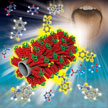 Conventional electronic tongues utilize pattern recognition for analysis using arrays of synthetic materials such as polymers, artificial membranes and semiconductors, for applications in the food and beverage industries. Even with current technological advances, e-tongue approaches still cannot mimic the biological features of the human tongue with regard to identifying elusive analytes in complex mixtures, such as food and beverage products. But researchers have now developed a human bitter-taste receptor as a nanobioelectronic tongue. They utilized a human taste receptor as a sensing element for mimicking the human taste system and selective detection.
Conventional electronic tongues utilize pattern recognition for analysis using arrays of synthetic materials such as polymers, artificial membranes and semiconductors, for applications in the food and beverage industries. Even with current technological advances, e-tongue approaches still cannot mimic the biological features of the human tongue with regard to identifying elusive analytes in complex mixtures, such as food and beverage products. But researchers have now developed a human bitter-taste receptor as a nanobioelectronic tongue. They utilized a human taste receptor as a sensing element for mimicking the human taste system and selective detection.
Dec 14th, 2012
 Nanotechnology-enabled bio-pharmaceuticals are the most innovative and highly specialized alternative medicines for curing chronic diseases. These functionally modified nanomaterials help in early detection of chronic diseases. In addition to this, they also detect the microorganisms and viruses associated with infections. In this article, the authors analyze the immense potential of nanotechnology in India's pharmaceutical and biotechnology industries.
Nanotechnology-enabled bio-pharmaceuticals are the most innovative and highly specialized alternative medicines for curing chronic diseases. These functionally modified nanomaterials help in early detection of chronic diseases. In addition to this, they also detect the microorganisms and viruses associated with infections. In this article, the authors analyze the immense potential of nanotechnology in India's pharmaceutical and biotechnology industries.
Dec 13th, 2012
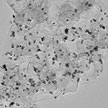 Fuel cells are able to convert chemical energy to electrical energy with little pollutant emission and high energy conversion efficiency. Despite these advantages, the performance of fuel cells depends largely on the oxygen reduction reaction (ORR), which is substantially affected by the activity of the cathode catalyst. Since the sluggish kinetics of ORR is the major factor impeding large-scale application of fuel cells, most research focuses on developing efficient catalysts for ORR.
Fuel cells are able to convert chemical energy to electrical energy with little pollutant emission and high energy conversion efficiency. Despite these advantages, the performance of fuel cells depends largely on the oxygen reduction reaction (ORR), which is substantially affected by the activity of the cathode catalyst. Since the sluggish kinetics of ORR is the major factor impeding large-scale application of fuel cells, most research focuses on developing efficient catalysts for ORR.
Dec 12th, 2012
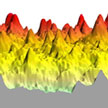 Energy-relevant materials like selenium have photovoltaic and photoconductive properties that make them interesting for the manufacture of solar cells and lighting devices. In most of these applications, as with all nanomaterials, the material surface plays a critical role. Therefore, their surface properties, and more particularly their solid surface energy - the energy required to create a new surface - have to be carefully determined in order to fully understand and control relevant manufacturing parameters for devices based on these materials.
Energy-relevant materials like selenium have photovoltaic and photoconductive properties that make them interesting for the manufacture of solar cells and lighting devices. In most of these applications, as with all nanomaterials, the material surface plays a critical role. Therefore, their surface properties, and more particularly their solid surface energy - the energy required to create a new surface - have to be carefully determined in order to fully understand and control relevant manufacturing parameters for devices based on these materials.
Dec 11th, 2012
 Will nanotechnology impact future global security? According to Jayshree Pandya, such technology is indeed about to change large-scale security dynamics, defense policies and possibly even the global balance of power. All states are eager to benefit from nanoscience, nano-engineering and nanotechnology initiatives - either directly or indirectly. While most states do not yet have dedicated nano-defense initiatives, rapid advances within the aforementioned fields are exciting many and becoming a cause of concern for the rest.
Will nanotechnology impact future global security? According to Jayshree Pandya, such technology is indeed about to change large-scale security dynamics, defense policies and possibly even the global balance of power. All states are eager to benefit from nanoscience, nano-engineering and nanotechnology initiatives - either directly or indirectly. While most states do not yet have dedicated nano-defense initiatives, rapid advances within the aforementioned fields are exciting many and becoming a cause of concern for the rest.
Dec 10th, 2012
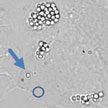 Researchers are very interested in investigating the biomechanical properties of the inner structure of cells due to their relevance in many important topics in biology such as intracellular and intercellular dynamics; tissue and organs formation and their homeostasis; but also in medicine as the formation and development of diseases like inflammatory disorders or tumor. In order to study inner cell properties, researchers have now presented a biophotonic holographic workstation that combines the complementary features of holographic optical tweezers (HOT) and self-interference digital holographic microscopy, in order to investigate biomechanics properties at the single cell level.
Researchers are very interested in investigating the biomechanical properties of the inner structure of cells due to their relevance in many important topics in biology such as intracellular and intercellular dynamics; tissue and organs formation and their homeostasis; but also in medicine as the formation and development of diseases like inflammatory disorders or tumor. In order to study inner cell properties, researchers have now presented a biophotonic holographic workstation that combines the complementary features of holographic optical tweezers (HOT) and self-interference digital holographic microscopy, in order to investigate biomechanics properties at the single cell level.
Dec 7th, 2012
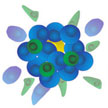 The subventricular zone (SVZ) is a region in the mammalian brain where self-renewing and multipotent neural stem cells give rise to new brain cells such as neurons, astrocytes, and oligodendrocytes. Neuroscientists and cell biologists are keen to use nanotechnologies to manipulate endogenous stem cell niches such as the SVZ. New work describes the first example in the manipulation of the neural stem cell niche by the use of nanoparticles releasing a pro-neurogenic agent - retinoic acid.
The subventricular zone (SVZ) is a region in the mammalian brain where self-renewing and multipotent neural stem cells give rise to new brain cells such as neurons, astrocytes, and oligodendrocytes. Neuroscientists and cell biologists are keen to use nanotechnologies to manipulate endogenous stem cell niches such as the SVZ. New work describes the first example in the manipulation of the neural stem cell niche by the use of nanoparticles releasing a pro-neurogenic agent - retinoic acid.
Dec 6th, 2012
 Nanotechnology can play a significant role in the construction industry and stands at eighth position in terms of most significant areas of applications in nanotechnology. Nanoengineering of cement-based materials can result in outstanding or smart properties. Introduction of nanotechnology in cement industry has the potential to address some of the challenges such as CO2 emissions, poor crack resistance, long curing time, low tensile strength, high water absorption, low ductility and many other mechanical performances.
Nanotechnology can play a significant role in the construction industry and stands at eighth position in terms of most significant areas of applications in nanotechnology. Nanoengineering of cement-based materials can result in outstanding or smart properties. Introduction of nanotechnology in cement industry has the potential to address some of the challenges such as CO2 emissions, poor crack resistance, long curing time, low tensile strength, high water absorption, low ductility and many other mechanical performances.

 Subscribe to our Nanotechnology Spotlight feed
Subscribe to our Nanotechnology Spotlight feed





